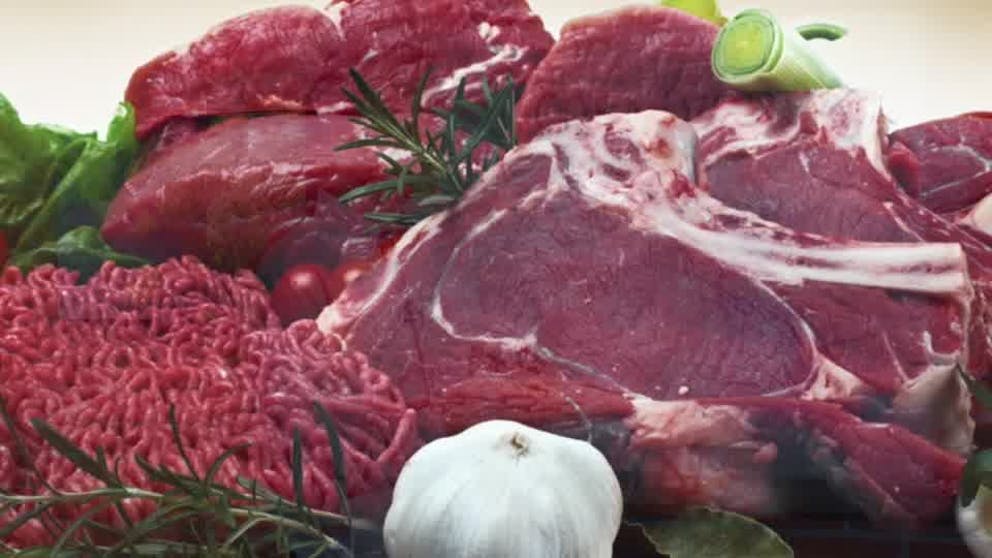Dr. Berg Goes Carnivore for 2 Weeks

Visualize Your Plate – End Calorie Counting
Visual examples of balanced keto meals and portion sizes
Learn how to assemble nutritious meals that support your health without counting calories
Receive practical advice for all essential food groups
Use this practical cut-out wallet guide for on-the-go guidance and easy meal planning

Visualize Your Plate – End Calorie Counting
Visual examples of balanced keto meals and portion sizes
Learn how to assemble nutritious meals that support your health without counting calories
Receive practical advice for all essential food groups
Use this practical cut-out wallet guide for on-the-go guidance and easy meal planning

Visualize Your Plate – End Calorie Counting
Visual examples of balanced keto meals and portion sizes
Learn how to assemble nutritious meals that support your health without counting calories
Receive practical advice for all essential food groups
Use this practical cut-out wallet guide for on-the-go guidance and easy meal planning

Visualize Your Plate – End Calorie Counting
Visual examples of balanced keto meals and portion sizes
Learn how to assemble nutritious meals that support your health without counting calories
Receive practical advice for all essential food groups
Use this practical cut-out wallet guide for on-the-go guidance and easy meal planning

Visualize Your Plate – End Calorie Counting
Visual examples of balanced keto meals and portion sizes
Learn how to assemble nutritious meals that support your health without counting calories
Receive practical advice for all essential food groups
Use this practical cut-out wallet guide for on-the-go guidance and easy meal planning

Visualize Your Plate – End Calorie Counting
Visual examples of balanced keto meals and portion sizes
Learn how to assemble nutritious meals that support your health without counting calories
Receive practical advice for all essential food groups
Use this practical cut-out wallet guide for on-the-go guidance and easy meal planning

Visualize Your Plate – End Calorie Counting
Visual examples of balanced keto meals and portion sizes
Learn how to assemble nutritious meals that support your health without counting calories
Receive practical advice for all essential food groups
Use this practical cut-out wallet guide for on-the-go guidance and easy meal planning

Visualize Your Plate – End Calorie Counting
Visual examples of balanced keto meals and portion sizes
Learn how to assemble nutritious meals that support your health without counting calories
Receive practical advice for all essential food groups
Use this practical cut-out wallet guide for on-the-go guidance and easy meal planning

Visualize Your Plate – End Calorie Counting
Visual examples of balanced keto meals and portion sizes
Learn how to assemble nutritious meals that support your health without counting calories
Receive practical advice for all essential food groups
Use this practical cut-out wallet guide for on-the-go guidance and easy meal planning
Imagine stepping into a world where your plate is a monochrome of meats, from sunrise to sunset. The carnivore diet, hailed and debated by many, promises transformations that sound almost too good to be true.
Weight loss? Check. Improved blood pressure and sugar levels? Allegedly, yes. A life free from the foggy brain syndrome? Advocates swear by it.
Yet, skepticism abounds. Critics raise eyebrows at dismissing an entire kingdom—Plantae—for animal's sake. "Can one thrive on meat alone?" they ask. It’s a realm where pork rinds become croutons, and steak is your staple, intriguing yet intimidating for newcomers.
The stats don't lie: individuals diving headfirst into this eating plan report staggering energy levels and health markers shifts. But what lies beneath these testimonials? Is it merely about cutting carbs or something more profound?
Understanding the Carnivore Diet
The carnivore diet is a highly restrictive diet focusing only on animal-based foods. This means saying goodbye to fruits, vegetables, grains, and legumes and hello to a diet rich in meat, fish, eggs, and some dairy products.
The goal? Eliminate all sources of carbohydrates and focus solely on protein and fat from animal sources. Fans of this diet are all in; swearing it helps you drop those pounds, clears up the mental fog, and boosts your health like nothing else.
Core Components of the Carnivore Diet
So, what exactly can you eat on the carnivore diet? The staples include beef, pork, chicken, turkey, fish, and eggs. Some people also contain small amounts of low-lactose dairy products like butter, heavy cream, and hard cheeses.
But that's pretty much it. No fruits, vegetables, grains, legumes, or added sugars or sweeteners. Now, this is a whole different ballgame from the typical American diet, which leans pretty heavily on processed foods and carbohydrates.
The Objective of Zero Carbohydrates
The main objective of the carnivore diet is to keep carbohydrate intake as close to zero as possible. This means eliminating not just apparent sources of carbs like bread and pasta but also fruits, vegetables, and even some dairy products that contain natural sugars.
This is because carbohydrates, significantly refined carbs, can contribute to inflammation, insulin resistance, and other health problems. By eliminating them, proponents of the carnivore diet believe that the body can heal and function at its best.

Health Benefits Observed from the Carnivore Diet
Despite its restrictive nature, many people who have tried the carnivore diet report significant improvements in their health.
People often talk about the perks they've noticed, like shedding a few pounds, feeling mentally sharper, and not dealing with as much swelling or soreness.
Impact on Gut Health
One area where the carnivore diet seems to shine is gut health. Many people who struggle with digestive issues like bloating, gas, and diarrhea find that their symptoms improve dramatically when they switch to a meat-based diet.
This may be because the carnivore diet eliminates many common gut irritants, such as fiber, lectins, and FODMAPs. By giving the gut a break from these substances, it may be able to heal and function more efficiently.
Autoimmune Conditions and Dietary Changes
Another area where the carnivore diet shows promise is in managing autoimmune conditions.
Many people with autoimmune diseases like rheumatoid arthritis, lupus, and multiple sclerosis have reported significant improvements in their symptoms after adopting a carnivore diet.
This might be because the diet cuts out many foods that cause inflammation and trigger autoimmune responses, like gluten, dairy products, and nightshade veggies. Cutting out these triggers might allow the body to chill out and stop turning on itself.
Addressing Nutritional Concerns
Of course, any highly restrictive diet comes with concerns about nutrient deficiencies. One of the most common concerns with the carnivore diet is the lack of vitamin C, found primarily in fruits and vegetables.
Vitamin C and Scurvy Myths Debunked
However, proponents of the carnivore diet argue that the body's need for vitamin C is significantly reduced when carbohydrate intake is low.
They point to the fact that traditional Inuit populations, who subsisted primarily on meat and fish, did not develop scurvy despite their lack of plant foods.
No scurvy or vitamin C deficiency has been reported among people following a well-formulated carnivore diet.
While more research is needed to fully understand the long-term effects of this way of eating, the body may be able to adapt to lower vitamin C intake when carbohydrates are eliminated.
Personalizing Your Carnivore Diet Experience
The carnivore diet may seem straightforward - eat meat, skip the rest. However, there's always a chance to make it your own, especially when discussing dairy.
Some people thrive on pure carnivory, while others find that including certain dairy products works best for their bodies and goals.
To Dairy or Not to Dairy?
The excellent dairy debate rages on in the carnivore community. While some individuals swear by the benefits of butter, ghee, and hard cheeses, others find that even small amounts of dairy trigger inflammation and digestive distress.
It all boils down to how much you can handle and playing around with what works for you. If you're new to the carnivore diet, consider starting with a dairy-free approach and gradually introducing dairy products one at a time to gauge your body's response.
Transitioning From and Beyond the Carnivore Diet
For some people, the carnivore diet is a short-term reset to eliminate potential trigger foods, reduce inflammation, and give the gut a break. Others find that they feel their best in a long-term carnivorous approach.
Broadening Dietary Horizons Post-Carnivory
If you decide to transition off the carnivore diet, it's important to reintroduce foods slowly and systematically. Start with small portions of easy-to-digest foods like cooked vegetables, fruit, and honey, and pay close attention to how your body responds.
Some people can tolerate various foods post-carnivore, while others discover that certain food groups (like grains or legumes) don't work for their bodies.

Making Informed Choices About Your Diet
The best diet is the one that makes you feel your best - physically, mentally, and emotionally. Some people thrive on a pure carnivore approach, while others do better with a more varied diet that includes vegetables, fruits, and other plant foods.
The key is to listen to your body, pay attention to how different foods make you feel, and be willing to experiment and adjust as needed.
The Role of Metabolomic Testing in Personalized Nutrition
While self-experimentation is a valuable tool, advanced testing methods, like metabolomic testing, can provide even more insight into one's unique biochemistry and nutritional needs.
By analyzing your blood, urine, or stool samples, metabolomic testing can give you a detailed picture of your body's metabolic processes, nutrient deficiencies, and potential areas of imbalance.
This information can be beneficial in fine-tuning your diet and optimizing your health.
Dr. Berg's Carnivore Experiment
Explores the insights gained from Dr. Berg's two-week trial of a carnivore diet. This experiment highlights how drastically changing your diet can affect your health and well-being. To truly benefit from such dietary shifts, it's crucial to understand your individual body type.
By taking a body type quiz, you can uncover specific metabolic and nutritional needs that align with your unique physiology.
This personalized approach ensures that any dietary changes you make, whether adopting a carnivore diet or another plan, are tailored to optimize your health and achieve your wellness goals.
Conclusion
So, there you have it. The carnivore diet isn't just another fad waving its flag in the vast sea of nutritional plans—it's a testament to simplicity and returning to our primal roots.
We've walked through the meaty plains of what this diet entails, debunked myths like the scurvy scarecrow standing tall among vitamin C concerns, and explored how gut health and autoimmune conditions might find their knight in shining armor within this dietary approach.
But let’s not kid ourselves; it’s not all T-bones and ribeyes under a rainbow. The journey demands respect for personal biochemistry—understanding that dairy might be your friend or foe is crucial.
And as we ponder broadening horizons post-carnivory, remember that your plate is your experiment lab.
The real kicker? Metabolomic testing could be our compass in navigating these waters—a beacon lighting up personalized paths toward optimal health within the carnivore realm or beyond.
This isn’t about shunning plants with contempt but embracing an option that has whispered (or instead roared) life-changing promises into many ears.
You’ve now got a slab of knowledge served right on your table; whether you choose to feast on it or nibble cautiously is entirely up to you. Just know this: amidst the roaring debates and eyebrow raises lies an experience uniquely yours for the taking.
Previous blog
What I Would Do If I Had ALS (Amyotrophic Lateral Sclerosis): Lou Gehrig’s Disease – Dr. BergNext blog
How to Get Rid of Sebaceous FilamentsTags

Popular
08/21/2024
55.7K views
02/23/2025
46.8K views
11/18/2024
281.1K views
03/18/2024
11/21/2022




